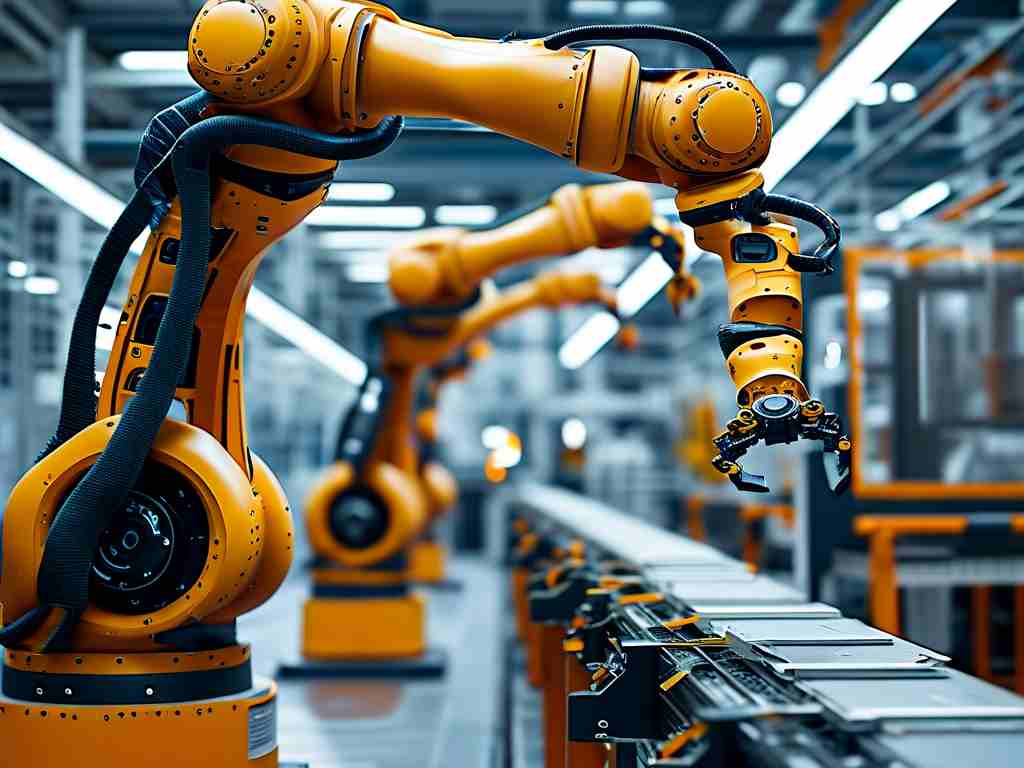The integration of robotics into textile manufacturing represents a groundbreaking shift in how fabrics are designed and produced. This article delves into the core mechanisms driving robotic textile systems, revealing how advanced automation reshapes traditional weaving, knitting, and material handling processes.

At the heart of robotic textile technology lies precision motion control. Industrial robotic arms equipped with specialized end-effectors – such as programmable grippers or needle arrays – execute millimeter-level accurate movements. These systems leverage machine vision to track thread tension, detect fabric irregularities, and adjust workflows in real time. For instance, a robotic loom might use 3D cameras to map warp yarn positions before initiating a weaving pattern, minimizing material waste by 18-22% compared to conventional methods.
Material handling innovations form another critical component. Automated guided vehicles (AGVs) now transport raw fibers between production stages using RFID-tagged containers, while collaborative robots (cobots) sort dyed fabrics based on spectral analysis data. A notable example is the "FiberSync" system developed by Swiss engineers, which employs electrostatic adhesion to manipulate delicate silk threads without surface damage. This technology reduces manual intervention by 40% in luxury textile production lines.
The programming architecture behind these systems combines CAD/CAM software with adaptive machine learning algorithms. When creating complex Jacquard patterns, robots analyze historical production data to optimize shuttle speed and thread density. During a recent trial at a Guangdong-based factory, such adaptive systems reduced pattern errors by 31% while maintaining production speeds of 2.5 meters per minute for intricate designs.
Energy efficiency emerges as an unexpected benefit of robotic textile systems. Variable-frequency drives in robotic looms adjust power consumption based on real-time load requirements, cutting energy use by 15-20%. Moreover, predictive maintenance algorithms analyze vibration patterns from servo motors, enabling component replacements before failures occur. A study by the Textile Robotics Consortium shows this approach decreases downtime by 37% across continuous production cycles.
Challenges persist in handling non-uniform natural fibers. Researchers at MIT's Fabric Robotics Lab are developing tactile sensors that measure fiber thickness and flexibility during processing. These sensors feed data to neural networks that adjust robotic handling parameters within 0.8-second intervals. Early tests with organic cotton demonstrate a 26% improvement in yarn consistency compared to manual processing methods.
Looking ahead, the convergence of 5G connectivity and robotic textile systems promises to revolutionize supply chain dynamics. Real-time production data from networked robotic units could enable dynamic order adjustments, reducing overstock by up to 35%. As these technologies mature, they may enable fully customized textile production runs with batch sizes as small as 10 units while maintaining cost efficiency.
The environmental implications are equally significant. Robotic systems precisely control dye application, reducing chemical usage by 25-30%. Water recycling modules integrated with robotic washing stations have shown 50% reduction in wastewater generation during denim finishing processes. Such advancements position robotic textile technology as a key player in sustainable manufacturing initiatives.
In , robotic textile systems combine mechanical precision, intelligent sensing, and data-driven optimization to redefine fabric production. While technical hurdles remain in handling delicate materials and scaling for artisanal techniques, ongoing advancements suggest a future where human craftsmanship and robotic efficiency coexist seamlessly in textile manufacturing.









